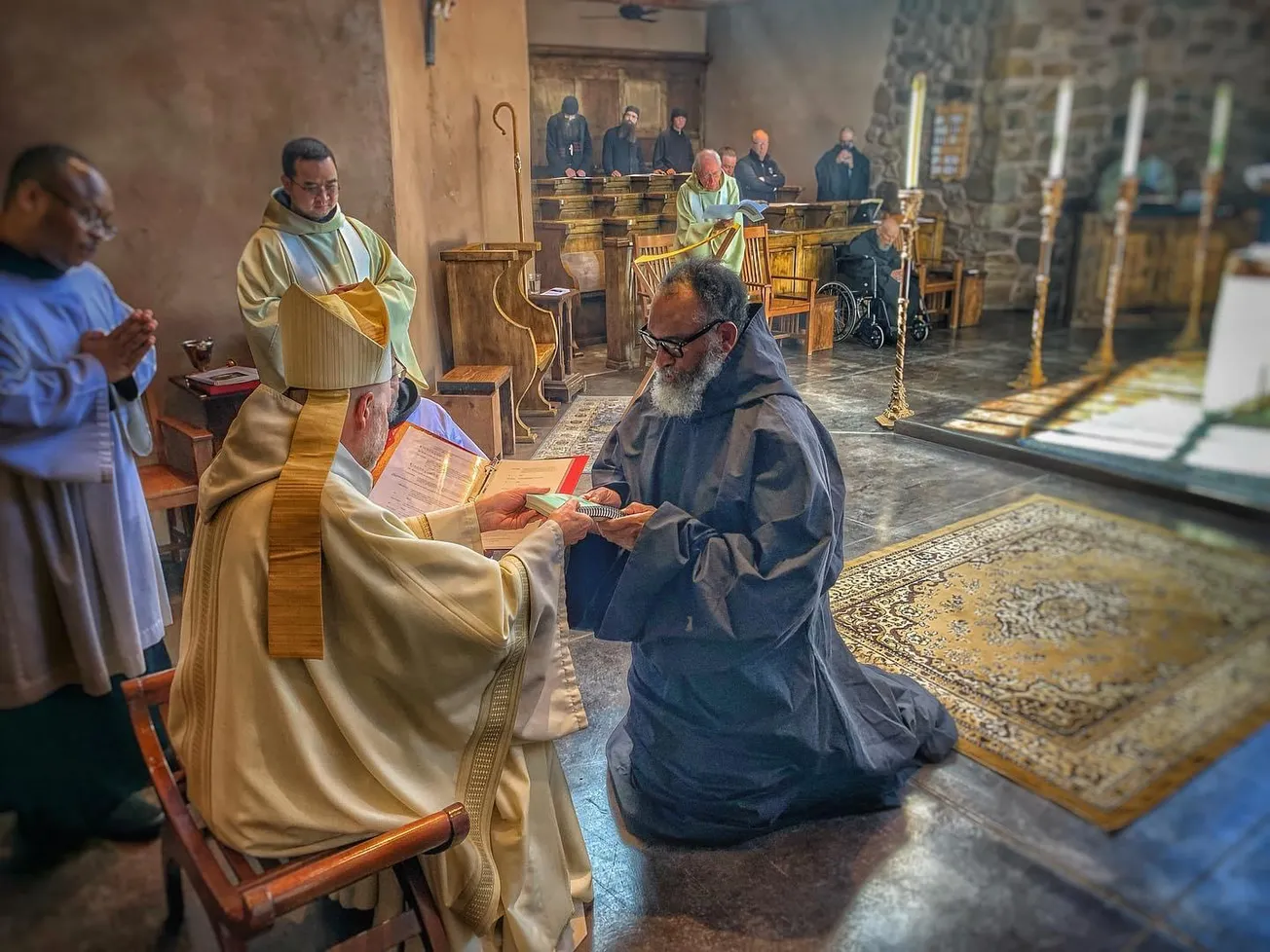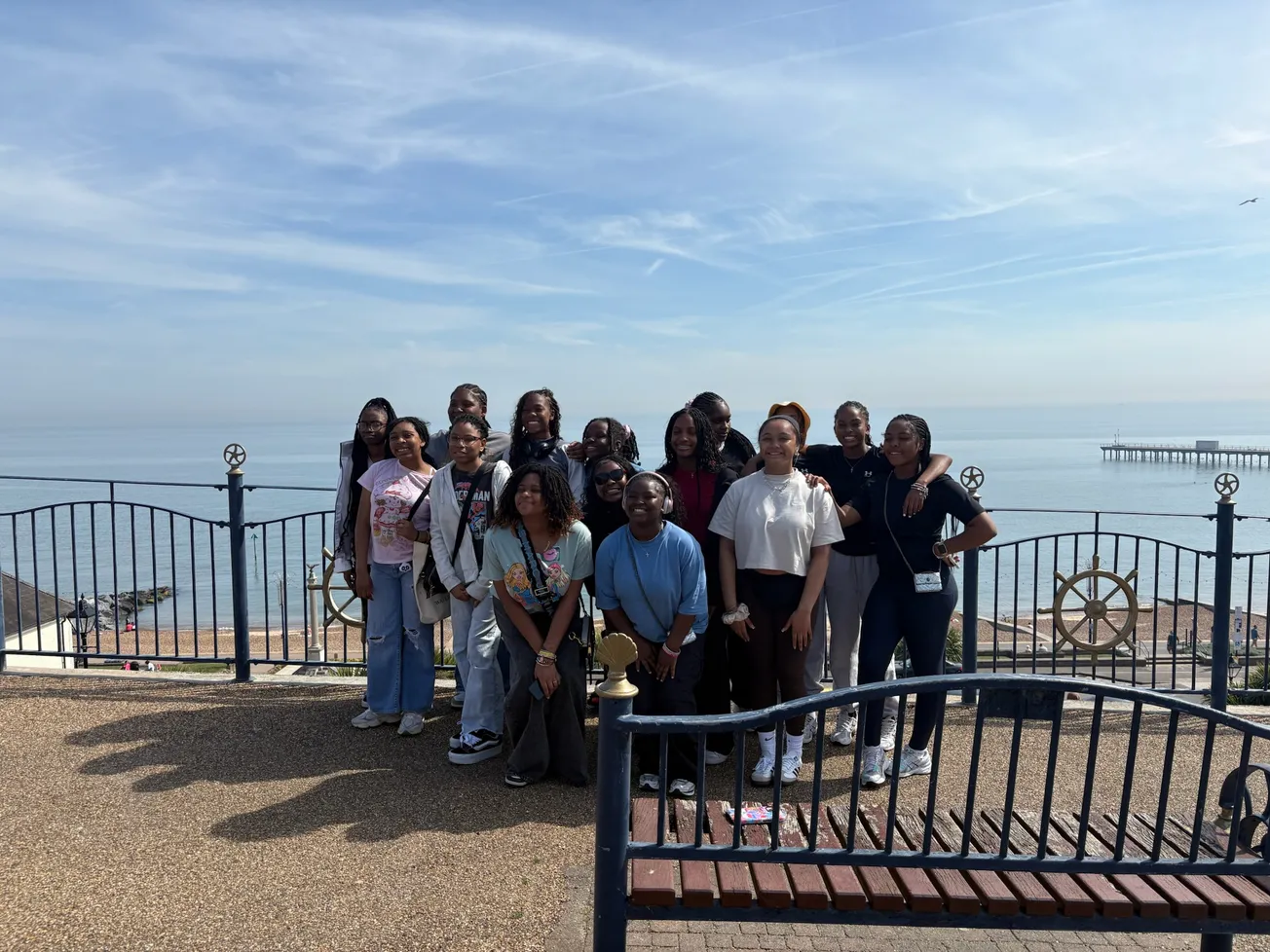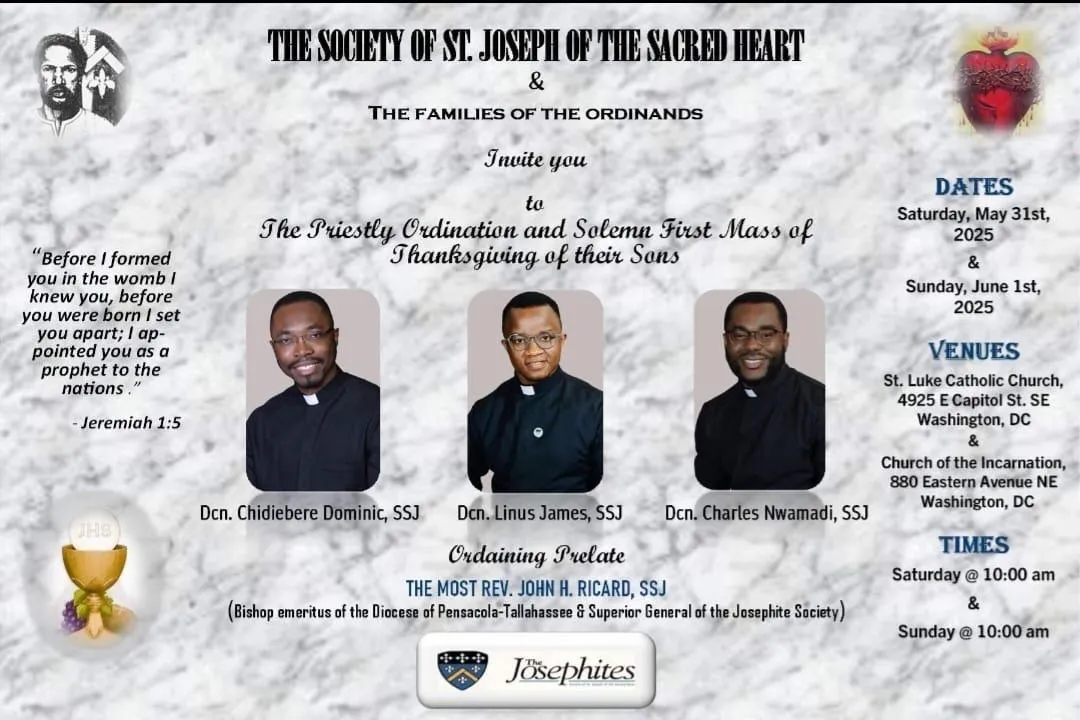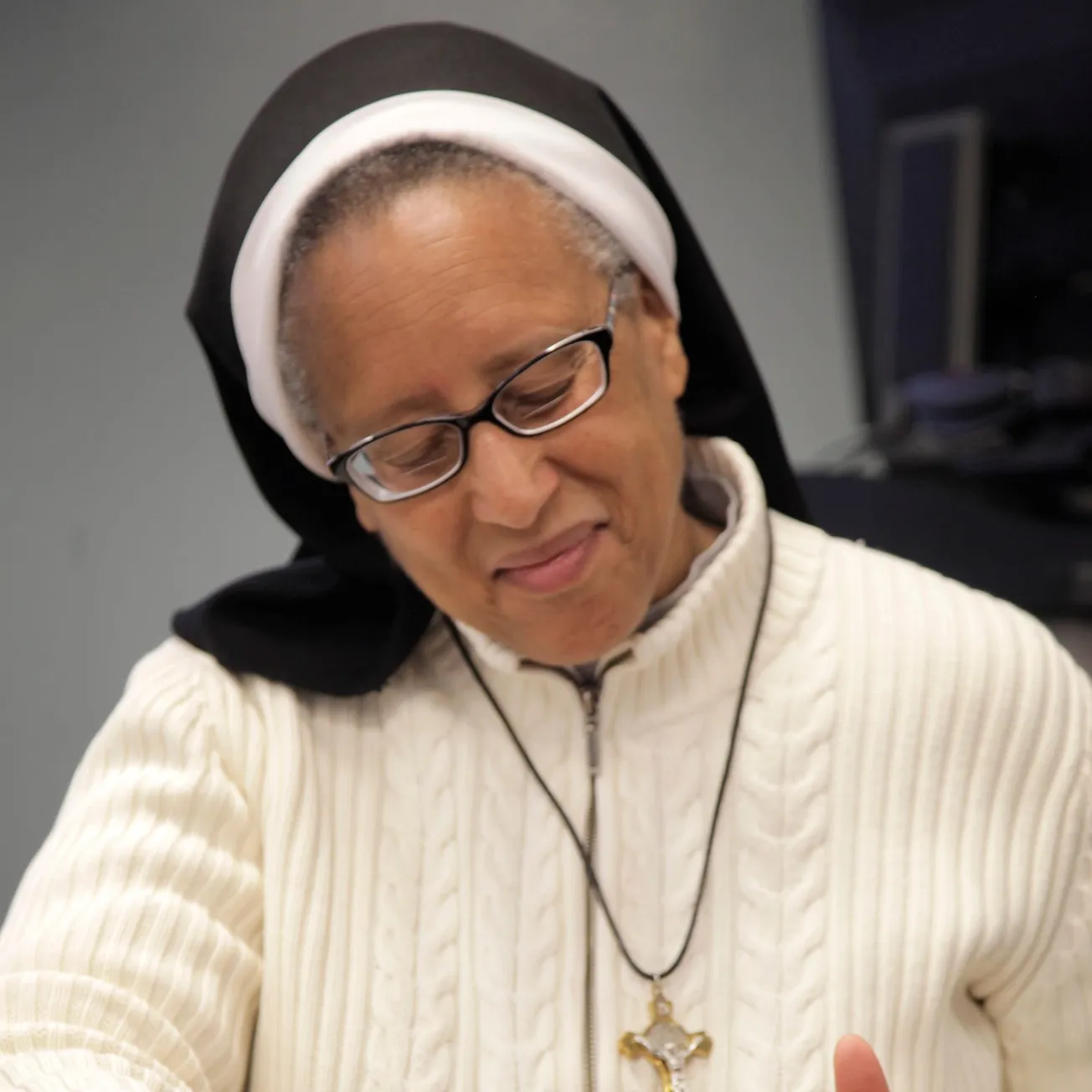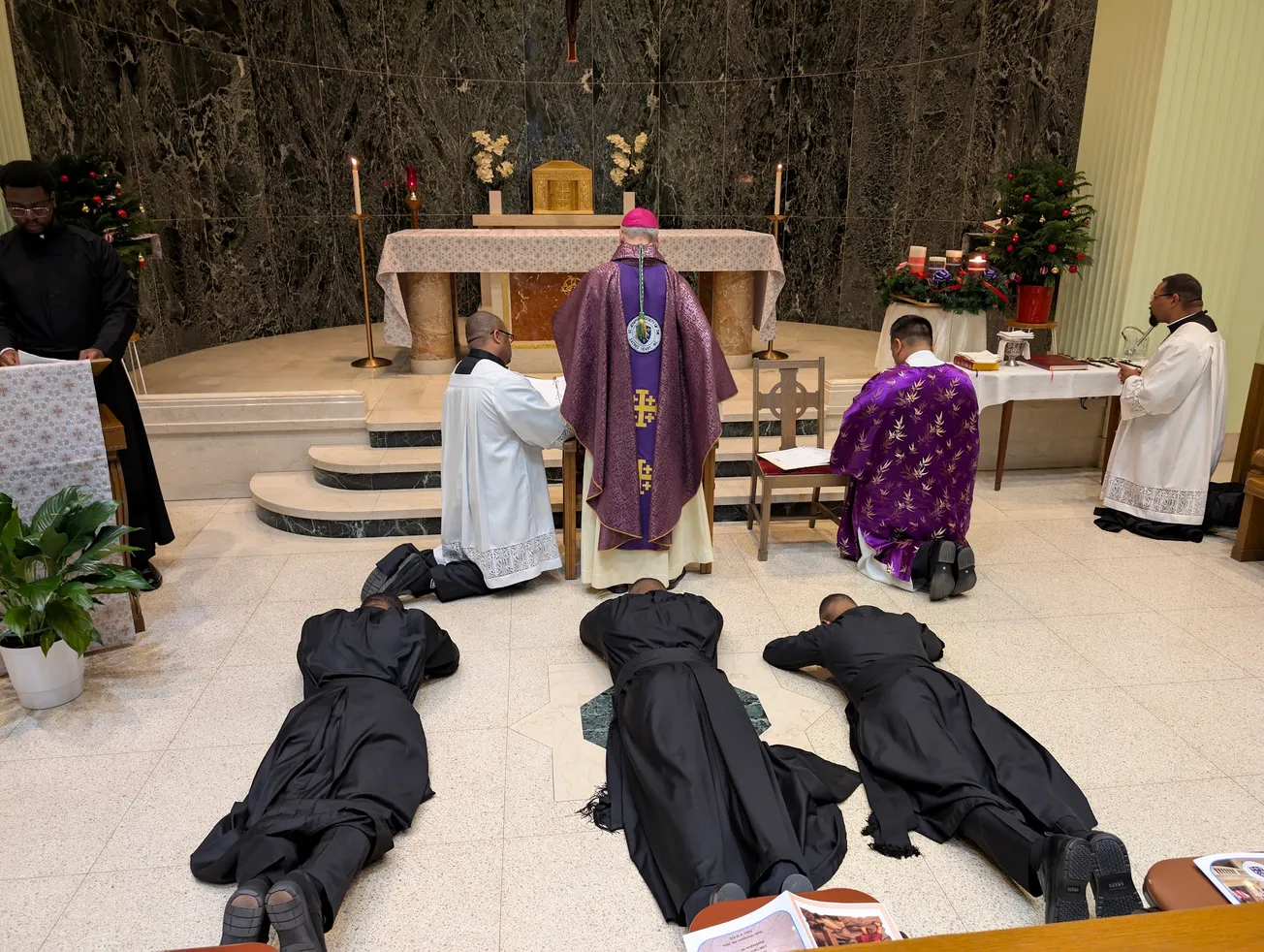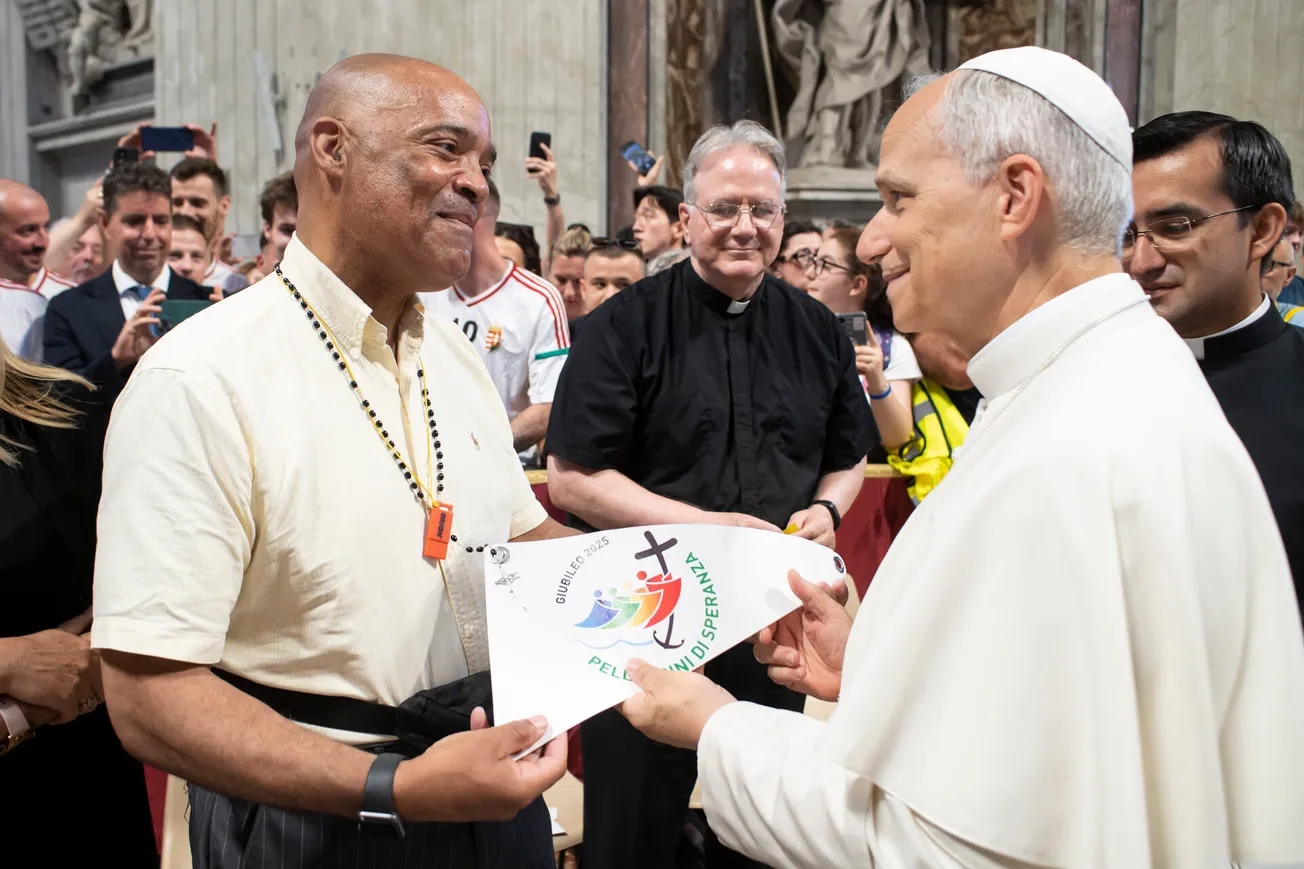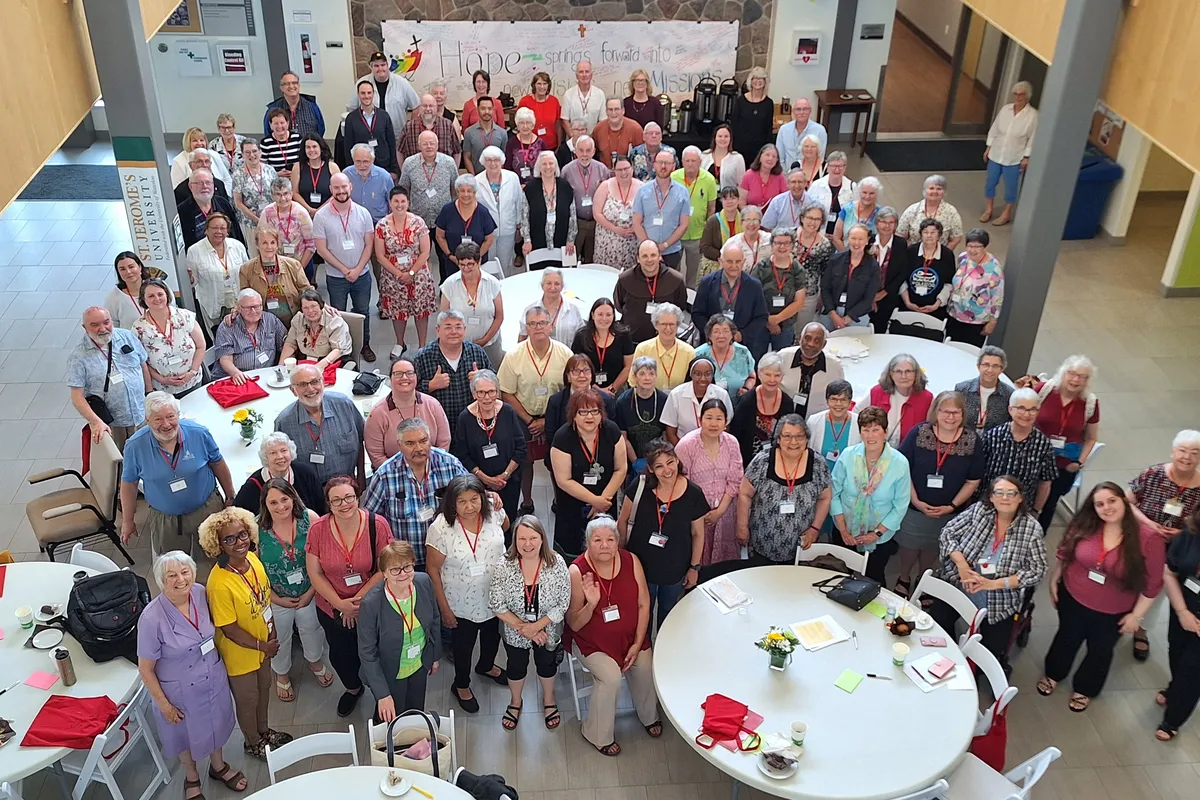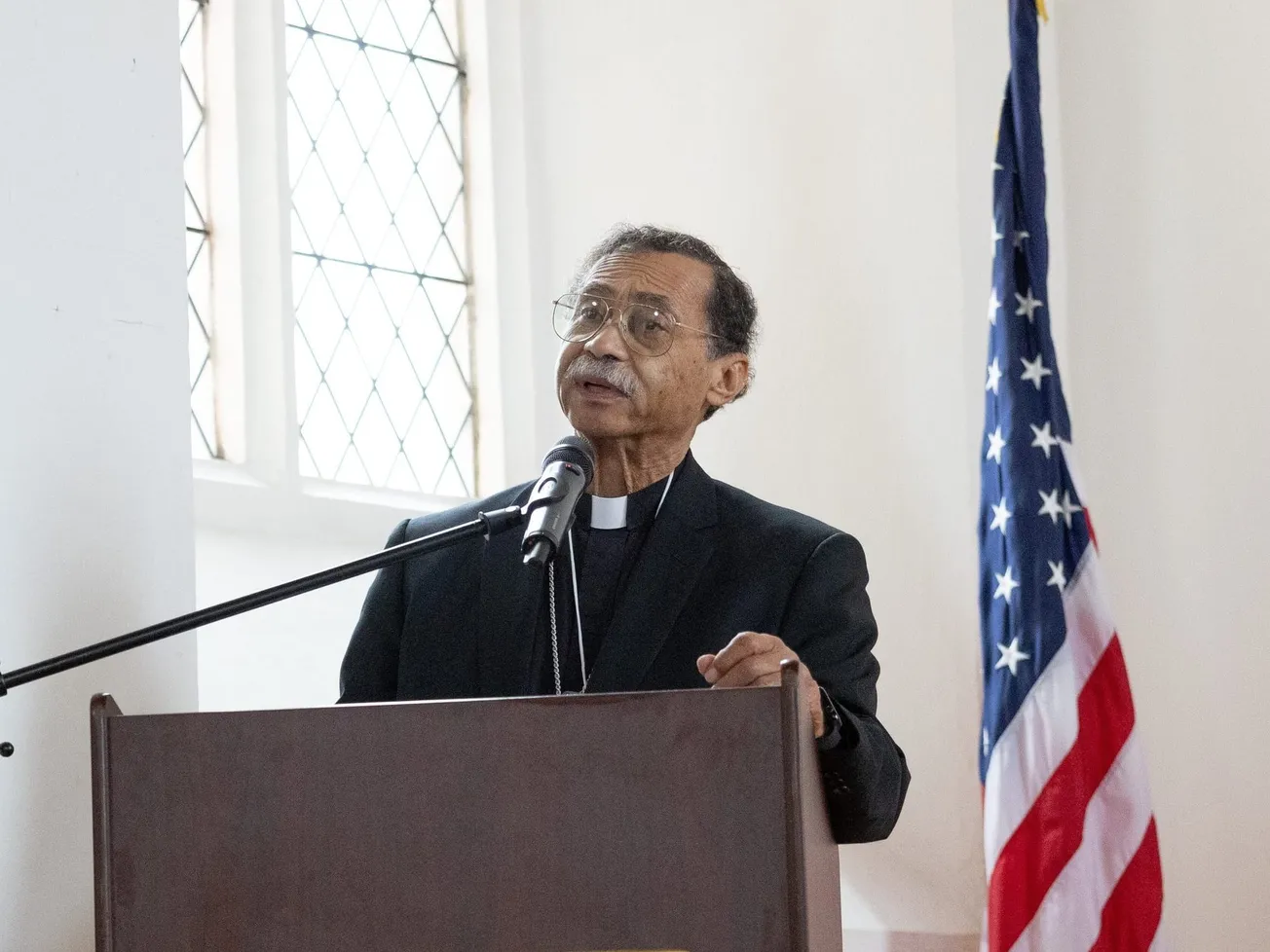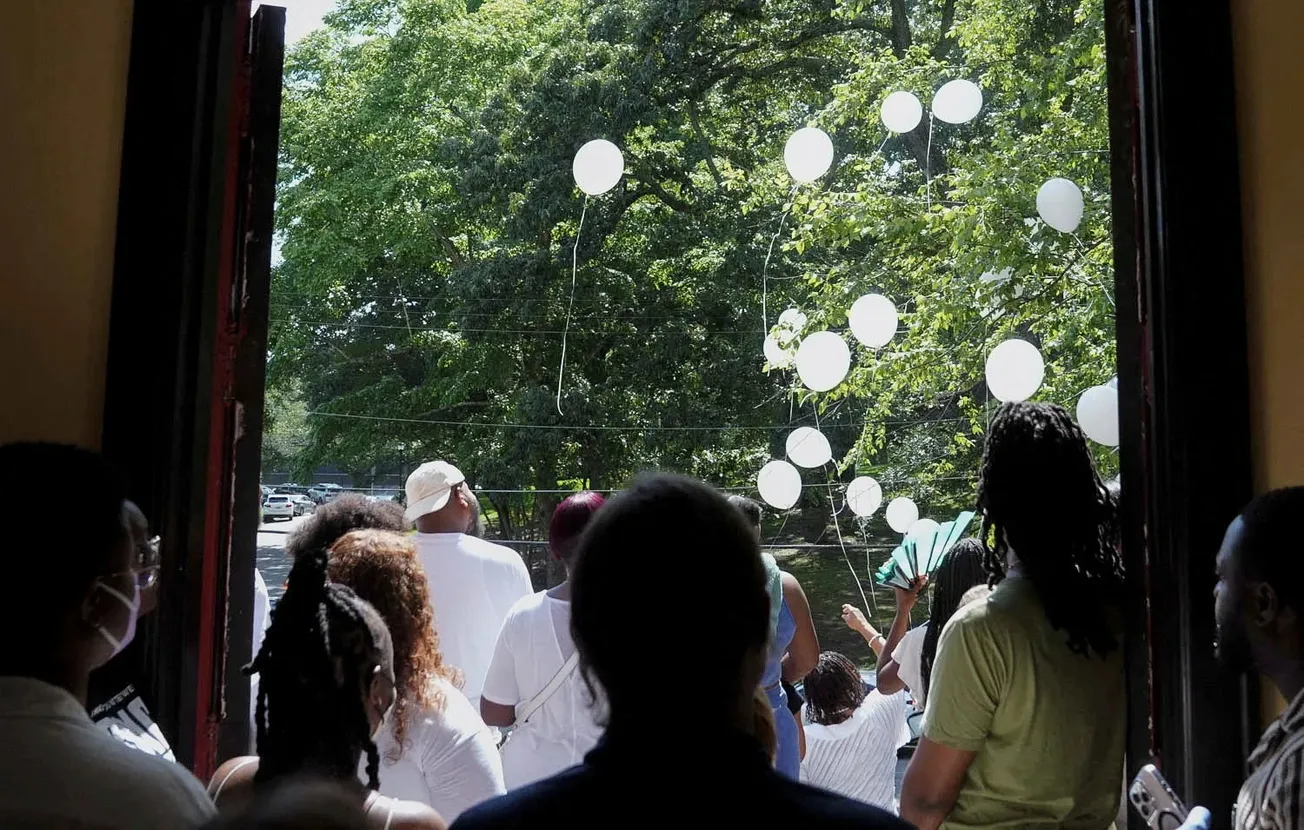On March 25 in New Mexico, the Monastery of Christ in the Desert welcomed an African-American as a full member of the community: Dom Chrsystom Christie-Searles, a former academic from Chicago who made his solemn profession.
The small Benedictine community, some two hours north of Santa Fe in Abiquiú, marked the event with a Mass and reception in the presence of Abbot Christian Leisy, attended by dozens of the monk’s friends and family members.
“Brother Chrysostom has found his permanent niche in the midst of desert beauty as a contemplative monk in the Chama Canyon wilderness,” the community wrote in an announcement.
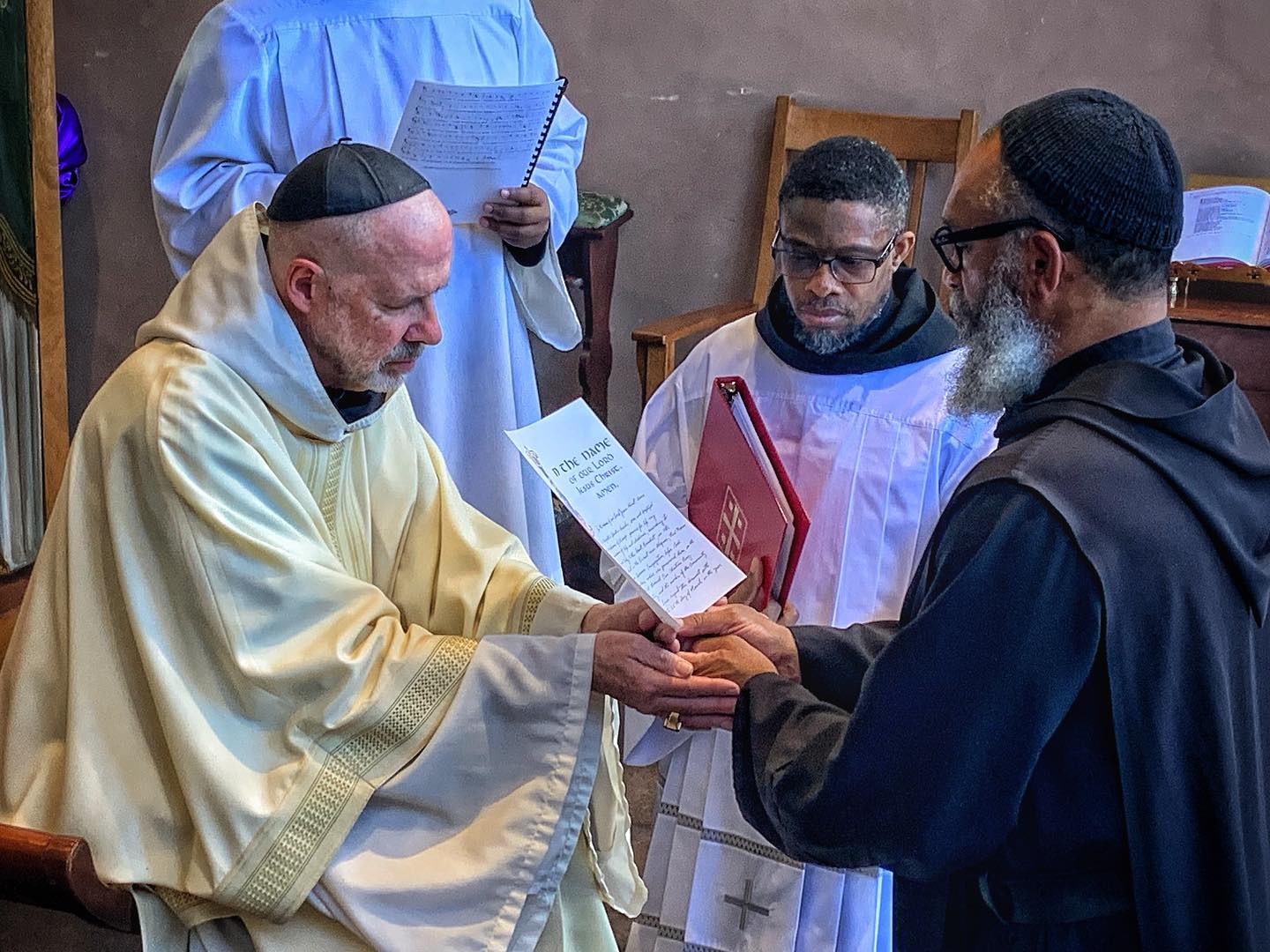
They also noted Christie-Searles’ “many talents” and his role as guestmaster at the house, which welcomes pilgrims throughout the year as an outward-facing apostolate. Hidden within that verbiage is Christie-Searles’ unique background—he holds five degrees and was a university professor—and his path to the monastery, which itself began with a pilgrimage.
Well, a series of pilgrimages.
“I had been introduced to monastic retreats late in life. I wasn't even aware that monks existed when I first started because I thought that was a medieval fixture,” Christie-Searles told BCM this week.
An adult convert to Catholicism while studying at John Hopkins University, he began making retreats of his own in 1995 at monasteries around the United States. He did so on an annual basis, in view of similar retreats priests and consecrated religious make as part of their canonical obligations.
“I was thinking, well, ‘Why should they just have to do that?’ We all should do that, if we can.”
His stops included, among others, Glastonbury Abbey in Massachusetts near Cape Cod, and the iconic Abbey of Gethsemani in Kentucky, the one-time home of famed Trappist monk Thomas Merton.
A friend eventually suggested Christie-Searles visit Christ in the Desert, a community founded by Benedictine priests and brothers from Upstate New York. (Merton himself once called it “the best monastic building in the country.”)
Christie-Searles registered for a retreat at Abiquiú in 2007—the year after the monastery was featured on the Discovery Channel—but later had to cancel. Seven years later, after completing academic research on Benedictine social ministry in Tanzania, he gave it a go again.
“When I drove to the monastery, on a 13-mile-long road off the grid into the canyon, and entered the cloister, I said, ‘I found it. I don't have to go anywhere else,’” he said.
Enamored with the beauty of the community, as well as its diversity and charism, Christie-Searles became an oblate of the community, a sort of lay affiliate program involving a novitiate and study of the Rule of St. Benedict.
After several more retreats at the monastery, however, he says the vocations director saw in him something more than an oblate.
“He said to me, ‘You might have a vocation.’”
Christie-Searles resisted for some time before realizing that he was, in various ways, oriented toward the Benedictine Rule even as he taught at Allegheny College in northwest Pennsylvania.
“I was actually living very monastically, but without community,” he said.
He eventually agreed to consider the possibility more seriously, combining the discernment with a walk on the Camino de Santiago from France to northwest Spain. Partway through the journey—which began with a flight to Rome—Christie-Searles found himself at a monastery-turned-hotel in Lyons, contemplating a vocation with the Benedictines in the New Mexico desert.
“I didn't get knocked off a horse. Angels didn’t hit me upside the head with their wings or anything. I just heard a voice saying, ‘I want you there.’”
He finished the Camino, returned to the states, finished his semester of teaching, and entered Christ in the Desert in 2017. He made his first profession two years later and now is the only remaining member of his novitiate class.
“No one of their own volition chooses to live in a 10-by-10-by-10 box in the middle of the desert, away from all accoutrements and novelties and comforts,” he said.
“You’re called to that life. You don’t choose it.”
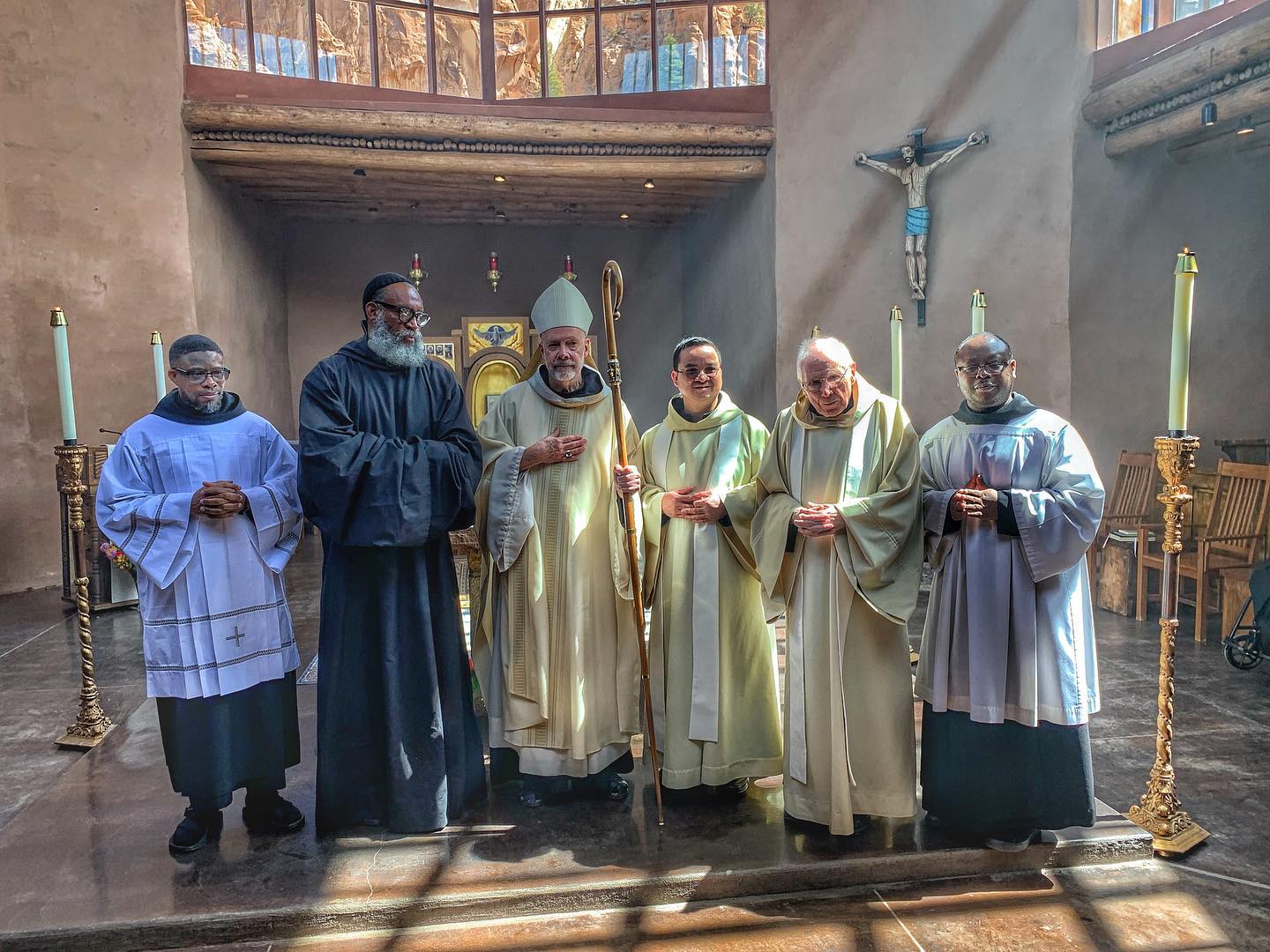
At 58 years old, Christie-Searles is one of three African-American members of Christ in the Desert—a striking number for a community of its size, today roughly 20 strong.
One of them, Br David Bryant, runs a popular social media apostolate, “The Desert Monk,” which shares the activity of the community with thousands of followers on Facebook, YouTube and Instagram.
Bryant’s work hearkens back to former times, when the monastery made national headlines for its innovative use of the internet in the early years of the World Wide Web. (Those uses were later shuttered in view of the need to focus on, well, monasticism.)
When Christie-Searles first entered the monastery, some twenty years after the community deserted its web design services, he says it had around 70 members. He also notes it has been as low as four or five monks during its nearly six-decade history.
“Monasteries are like any other organism. They grow, they mature and some die,” he said.
“But I think right now we have a very good core group of monks and we plan to be here as long as God allows us to be here.”
Even if not always connected to the internet, the monks remain connected with one another, even across vocational distinctions. An important aspect of the Benedictine charism is its egalitarian nature, wherein priests and religious brothers carry equal rank—a framework intended by its founder, Benedict of Nursia, who himself was never ordained.
Christie-Searles, too, is a monk without orders, but he says he is open to the possibility of becoming a priest. He would be one of only about 250 such African-American Catholics, very few of whom are in monastic life.
That said, following his final vows he is “content,” currently focusing on the life of prayer, his creative writing degree (which he will complete in May), and his guestmaster duties.
“I don’t feel changed, per se, because I'm doing pretty much the same things I did before I was solemnly professed,” he said.
“But I am consecrated and that means something. I’m growing into that. I’m committed to God.”
Nate Tinner-Williams is co-founder and editor of Black Catholic Messenger and a seminarian with the Josephites.


